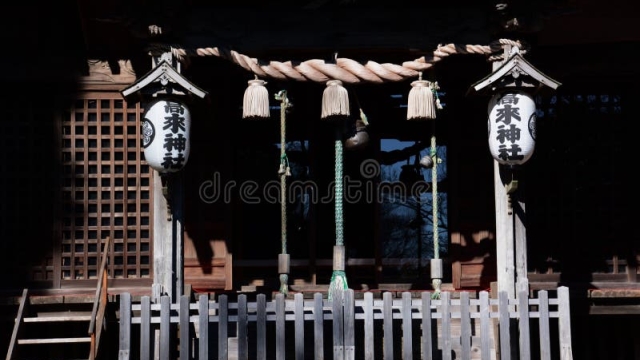
In the heart of Japan lies a tapestry of culture and spirituality woven through the centuries. Shinto shrines, sacred spaces dedicated to the kami, or spirits, are not only architectural wonders but also vibrant centers of life and tradition. These serene sanctuaries invite visitors to step away from the hustle of modern life and engage with a profound sense of history and nature. Each shrine is unique, telling its own story through its design, rituals, and the natural landscapes that cradle it.
As one wanders among the towering torii gates and meticulously maintained gardens, the enchantment of these sacred sites becomes palpable. The harmonious blend of simplicity and beauty encourages introspection and connection, both with the divine and the serene environment. From the bustling streets of Kyoto to the tranquil mountains of Kumano, exploring the shinto shrines in Japan offers a journey into the spiritual heart of the nation, where past and present coexist in a peaceful embrace.
The Spiritual Significance of Shinto Shrines
Shinto shrines in Japan serve as vital spiritual hubs where the divine and the earthly intersect. Each shrine is dedicated to specific kami, or spirits, which embody natural elements, ancestors, or various aspects of life. The architecture and layout of these shrines reflect the belief in a sacred connection between humans and the kami, creating spaces that invite worship and reflection. Visitors often feel a sense of peace and inspiration as they enter these serene environments, underscoring the significance of these sites in fostering spiritual connection.
The rituals and practices observed at Shinto shrines symbolize the importance of purity and gratitude in Japanese culture. Common practices include purification through water before entering the shrine, making offerings, and bowing to the deities. These actions not only honor the kami but also encourage personal reflection and spiritual growth among worshippers. This deep-rooted reverence for nature and the spiritual world encapsulates the essence of Shinto, emphasizing harmony with the world around us.
Join Now
Furthermore, Shinto shrines play a crucial role in community life and cultural identity. They are often the sites of seasonal festivals and ceremonies that reinforce community bonds and celebrate the cycles of nature. These gatherings allow individuals to connect with their heritage and the divine, thus promoting a sense of belonging. In this way, Shinto shrines serve as more than just religious sites; they are crucial to the social and cultural fabric of Japan, embodying the collective spirit of its people.
Architectural Wonders: A Closer Look
Shinto shrines in Japan are often characterized by their unique architectural styles that reflect the spiritual essence of the Shinto faith. The most iconic feature is the torii gate, which serves as a symbolic entrance to sacred spaces, marking the transition from the mundane to the divine. Crafted from wood or stone, these gates are often left unpainted to blend harmoniously with nature, emphasizing the Shinto belief in the sanctity of the natural world. Each shrine has its own distinctive layout, often featuring a main hall called the honden, where the kami, or spirits, are enshrined.
The craftsmanship of Shinto shrines showcases traditional Japanese building techniques and materials. Many shrines utilize natural elements like wood, bamboo, and thatch, harmonizing with their surroundings. The design typically features raised wooden floors, allowing the structures to breathe and protecting them from moisture. Intricate carvings and ornamental details reflect local traditions and the aesthetics of the era in which they were built, creating a visual narrative that enhances the spiritual ambiance of the site.
Visiting Shinto shrines in Japan is not just about admiring the architecture but also experiencing the serenity they offer. Many shrines are nestled in lush forests or by serene rivers, inviting visitors to connect with nature and reflect on their spiritual journey. The careful placement of pathways, lanterns, and gardens creates an atmosphere of contemplation and tranquility, making each shrine a sanctuary that encourages both internal reflection and a deeper appreciation of Japan’s rich cultural heritage.
Ceremonies and Rituals at Shrines
At Shinto shrines in Japan, ceremonies and rituals play a vital role in connecting worshippers with the divine. One of the most significant events is the Shinto wedding ceremony, where couples often choose to hold their nuptials at a shrine to receive blessings from the kami. The ceremony incorporates various traditional elements, such as wearing ornate kimono, performing ritualistic offerings, and reciting sacred vows. These practices not only honor the kami but also signify the couple’s commitment to one another while invoking the spirits for a prosperous union.
Another important ritual is the annual matsuri, or festival, which takes place at many shrines throughout Japan. Each matsuri is unique, often celebrating seasonal changes or honoring specific kami. These vibrant events feature lively parades, traditional music, and dance, drawing communities together in celebration. Participants may carry portable shrines, known as mikoshi, through the streets, symbolically transporting the kami and ensuring their presence within the community. Such festivals forge a deeper bond with the divine and create a sense of belonging among locals.
Purification rites, known as oharae, are also central to rituals at Shinto shrines in Japan. These ceremonies are conducted to cleanse individuals or communities of sins or impurities, allowing them to start anew. During oharae, priests may wave a purified branch called a sachiko over worshippers, or participants may engage in ritual washing at a temizuya, a purification basin found at shrine entrances. These acts of cleansing highlight the Shinto belief in the importance of purity and serve as a reminder to approach the kami with a clear heart and mind.
Preserving the Legacy of Shinto Shrines
The preservation of Shinto shrines in Japan is crucial for maintaining the cultural heritage and spiritual identity of the nation. Many of these shrines have been standing for centuries, serving as sacred spaces where people connect with the divine. To ensure their longevity, meticulous restoration efforts are undertaken, often utilizing traditional methods and materials. This commitment to authenticity not only honors the original craftsmanship but also deepens the connection between past and present generations.
Community involvement plays a significant role in the preservation of Shinto shrines. Local residents often participate in regular maintenance, festivals, and rituals, fostering a sense of belonging and shared responsibility. This engagement helps to keep the traditions alive, as people pass down knowledge and practices through storytelling and hands-on experiences. As a result, shrines become living entities that reflect the vibrancy of the communities they serve.
In recent years, there has been a growing awareness of the importance of Shinto shrines in the context of tourism and global appreciation of Japanese culture. Efforts to modernize facilities for visitors while respecting the sanctity of these spaces are underway. Educational programs and guided tours aim to enlighten both locals and tourists about the spiritual significance of these sites, ensuring that the legacy of Shinto shrines continues to thrive for generations to come.






Recent Comments